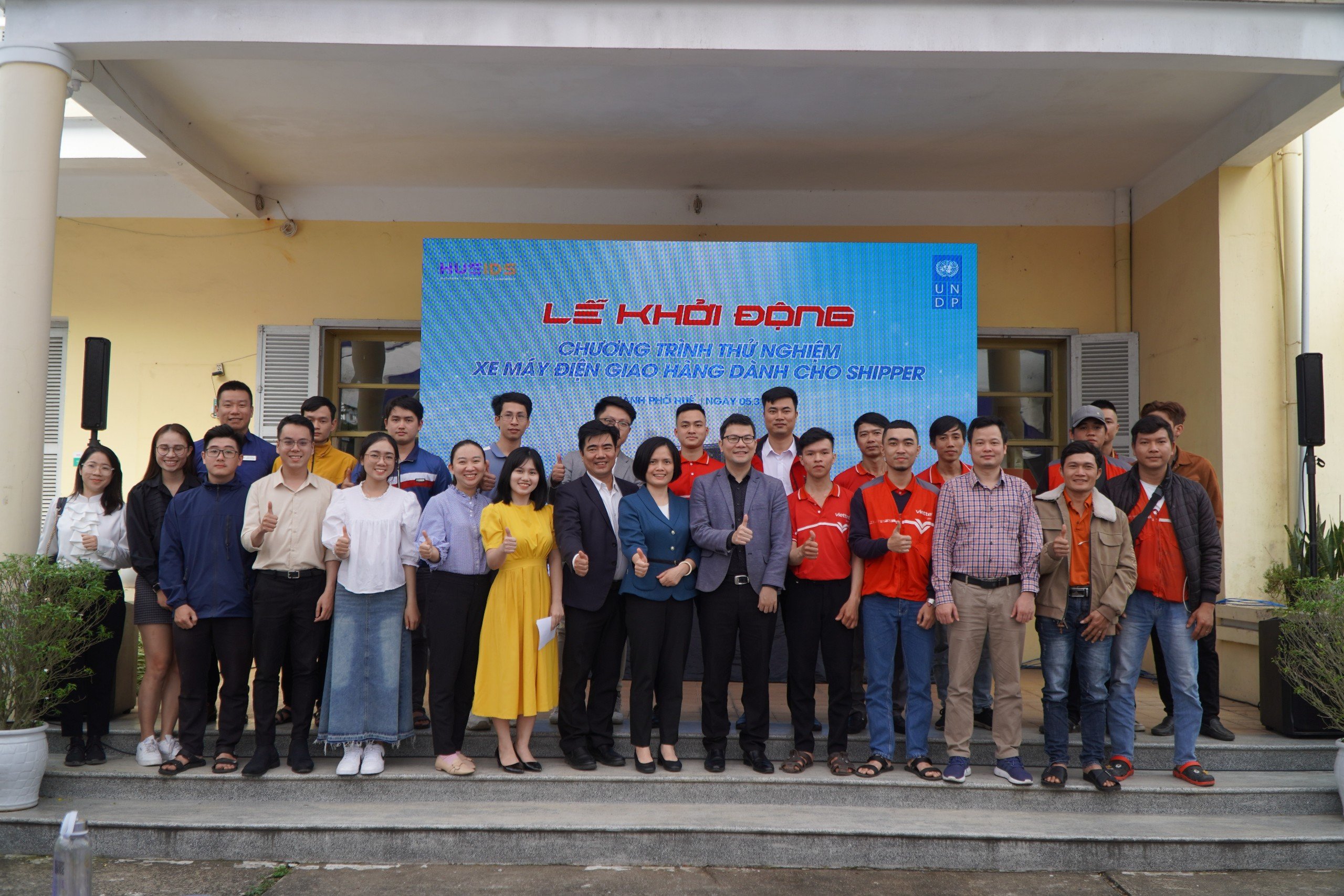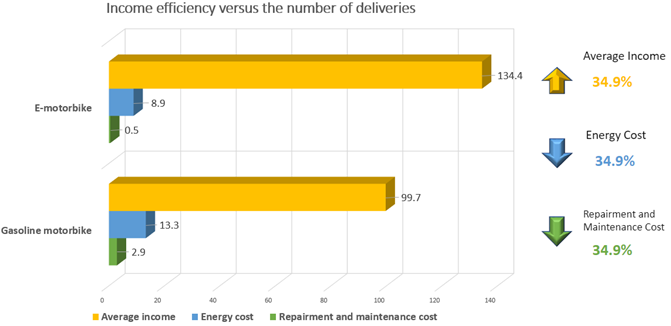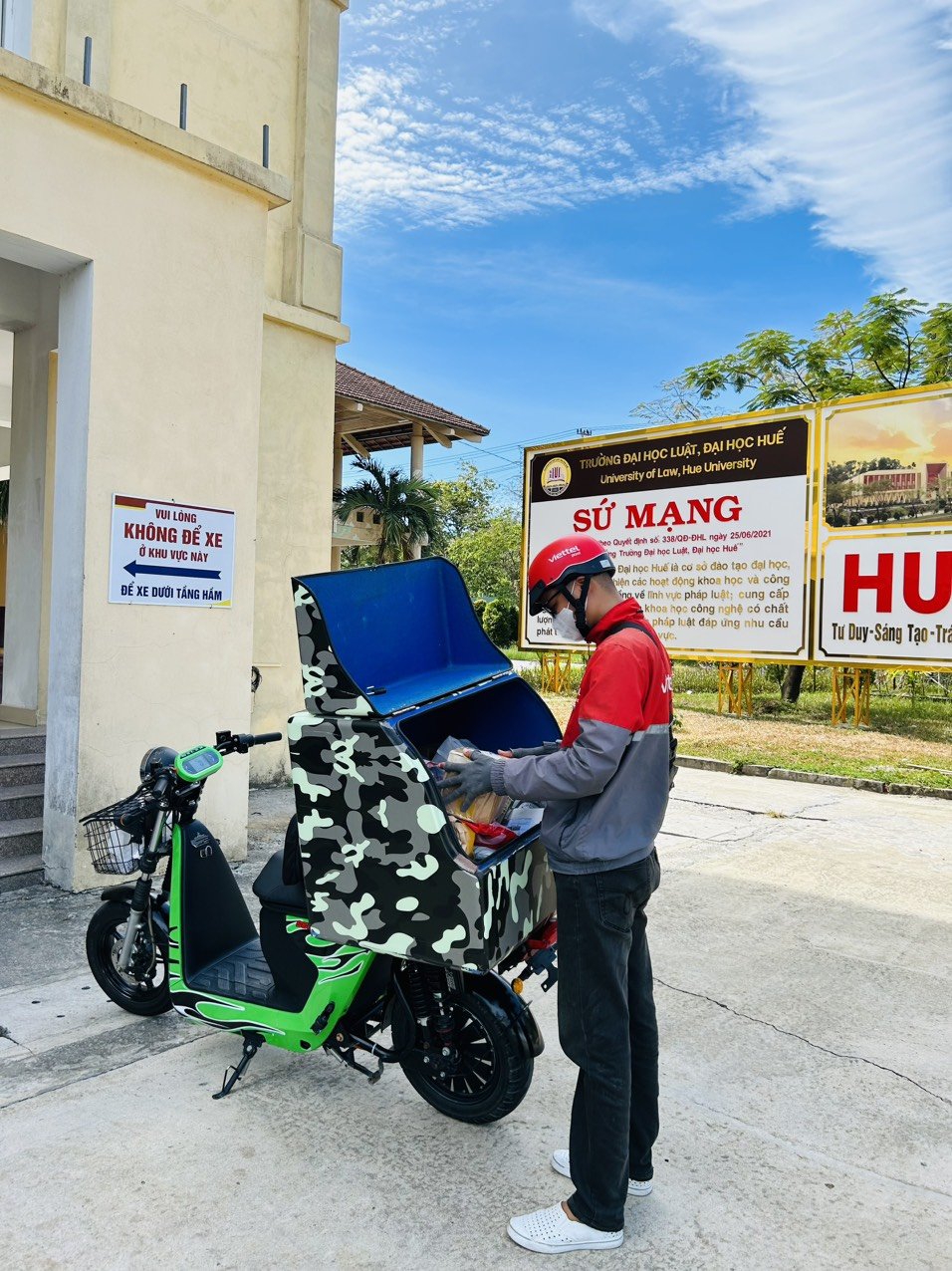Public Sector Innovation blog series: Designing Innovation Policy by By Tran Huong Giang, Head of experimentation, and Nguyen Thi Phuong Nga, Program Associate, Accelerator Lab, UNDP in Viet Nam
Transitioning from Fuel to Charge: A Policy Experiment Driving Green Mobility in Viet Nam’s Last-Mile Delivery
November 15, 2023

The shift towards sustainable transportation has become an urgent global priority as the impact of climate change continues to unfold. UNDP has conducted a policy experiment in Hue city to explore the potential of electric motorbikes as a greener alternative to traditional gasoline-powered ones. The experiment targeted shippers who deliver goods by motorbikes as they are key stakeholders in the urban mobility system. The policy experiment sheds light on how policymakers understand the key problems, the needs, preferences, and behaviors of shippers regarding electric motorbikes and to identify evidence-based policy interventions that can facilitate their adoption. In this first blog of our series on public sector innovation focusing on innovation policy design, we share the motivations behind this experiment, its key findings, and the collaborative efforts that are shaping a greener future for shippers in the country's last-mile delivery sector.
Why This Policy Experiment?
Viet Nam’s transportation sector has been a significant contributor to greenhouse gas emissions. In 2016, the sector emitted more than a fifth of the country’s total emissions. It is estimated that there are 60 million gasoline motorbikes in circulation in Viet Nam and they emit up to 42 million tons of CO2 per year depending on the number of traveled kilometers [1].
E-mobility has been identified as one of the 14 circular economy opportunities in the Metabolic Analysis. Optimizing vehicle utility/efficiency and electrifying the fleet has the potential to reduce GHG emissions by 210,000 tons a year by 2030.
The Government has taken steps to promote electric vehicles (EVs), including the reduction of registration fees [2] and excise taxes for lithium battery and electric cars [3]. These measures are not enough to encourage people to adopt EVs. Especially in the delivery sector, the most popular vehicles used for last-mile delivery are motorbikes while the investment cost is high, the charging infrastructure is not fully ready, and shippers still question the new technologies.
This experiment placed shippers at the center of the research, and tested solutions addressing the shippers’ constraints and concerns in switching to e-motorbikes. In this journey, policy makers were actively involved in the design, implementation, and evaluation of the experiment, which enabled them to learn from the evidence and feedback generated by the experiment. This informed their policy decisions and program to promote EV in Hue city.
This Experiment’s Objectives?
Two research questions drove the experiment’s design: “If e-motorbike helped increase the economic benefits of shippers” and “If green lifestyle contributed to add values to shippers and customers?”. The experiment aimed to ascertain whether adopting electric motorbikes could indeed lead to economic gains for shippers and whether the green image associated with these vehicles would resonate with both shippers and their customers.
Experimentation and results
Prior to designing the experiment, the research team conducted on-site interviews with shippers to validate assumptions related to barriers for shippers to transform from gasoline to electric motorbikes. The team also collected data from piloting delivery services by e-motorbikes in Da Nang. Those validations were used as inputs for an experiment design workshop gathering shippers and policy officers from different departments in Thua Thien Hue to identify experiment steps and interventions to answer the two research questions. A baseline assessment then was conducted involving 63 shippers to understand their concerns and pain points. Escalating fuel prices, maintenance cost, the impact of air and noise pollution, and worries about the unavailability of battery charging infrastructure if they shift to e-motorbikes, emerged as central concerns. The experiment was then executed over a span of 30 days involving two groups of professional shippers: one group continued to use gasoline motorbikes, while the other tried e-motorbikes.
Innovative solutions include battery swapping stations that enable shippers to exchange their batteries within 2 minutes instead of 3-8 hours of direct charging, and an automated system introduced to relay real-time information on charging stations’ locations.
The experiment yielded promising results (see figures below) that resonated with shippers on multiple levels. E-motorbikes, as indicated by the experiment’s statistical data, were not only more cost-effective but also building a greener image for shippers.

Apart from the economic benefits, shippers reported a sense of pride in contributing to a greener image of Hue city.
Le Duc Tai, a shipper who delivers goods to foreign tourists, shared:
“I noticed that environmental protection was important to the foreign visitors. They appreciated my eco-friendly electric motorbikes when I delivered goods to them. They were very kind and hospitable”.
“The switch to electric vehicles also had unexpected social benefits - dogs along delivery routes were quieter due to the absence of noisy engines” Ho Anh Tuan, a shipper said.
Policy Implications and Future Directions
The policy experiment's success has illuminated a path forward for Viet Nam's transportation sector. Policy makers in Hue city have been inspired to bolster infrastructure, such as charging stations, and raise awareness of green energy among shippers and citizens. Furthermore, the experiment has prompted discussions about extending similar experimentation to other industries before issuing policies.
“This green transportation policy experiment is very interesting. It helps policy makers like us to estimate the scale and impact of the policy upon enactment, thus having adaptive solutions to put the policy into practice,” said Dinh Xuan Ngoc from Thua Thien Hue province’s Department of Transport. “Green transportation including electric transportation is an important direction in the overall urban planning of Thua Thien Hue province, but there is still a huge gap between planning and implementation. This policy experiment is a case study that helps local authorities shape how the plans are put into practice”.
The transition from fossil fuel-powered vehicles to electric alternatives is more than just a technological shift – it's a paradigm change that requires collaboration, innovation, and a willingness to embrace new possibilities. The policy experiment in Viet Nam's last-mile delivery sector is an example of how such transitions can be initiated and catalyzed. By prioritizing the environment, economic viability, and the values of those involved, this experiment has illuminated a greener path for the future, one that promises reduced emissions, cleaner cities, and a healthier planet for all.
Learning and Collaboration
One of the experiment’s significant takeaways was the importance of multi-stakeholder involvement in the transition process. The experiment’s success was rooted in the close cooperation of various stakeholders, each playing a distinct role. While UNDP provided technical guidance on evidence-based experimentation and innovative revolving local fund, local organizations like Hue Institute of Development Studies (IDS) and Selex Motor, an emerging e-mobility company, and Ahafast provided critical expertise and resources. This collaborative model enabled seamless implementation and highlighted the need for diverse stakeholders to drive policy changes effectively.

[1] ADB project TA-9055 VIE: each gasoline motorbike emits 66g CO2 per kilometers. One motorbike travels in average from 15km to 30km per day that can emit 0,36 to 0,73 tons of CO2 per year.
[2] https://congan.hanoi.gov.vn//Portals/0/Cache/tuyen truyen/10-nd-2022-signed.pdf
[3] https://datafiles.chinhphu.vn/cpp/files/vbpq/2022/07/03-2022-qh15..pdf
---
With sincere thanks to Cung Trong Cuong and his Hue IDS team, as well as Nguyen Tuan Luong, UNDP Head of Solution Mapping, for their support throughout the implementation of this policy experiment. We highly appreciate Nguyen Viet Lan, UNDP Communications Lead, Do Le Thu Ngoc, Head of Inclusive Growth Unit for their insightful feedback, which has contributed to the completion of this blog.
Other entries from Public Sector Innovation blog series by Viet Nam Accelerator Lab Team:

 Locations
Locations

